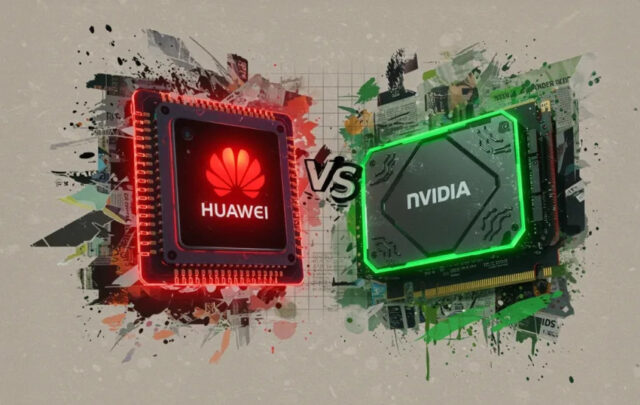
In a bold move that could reshape the AI hardware landscape, Huawei has announced the launch of its latest AI processor, the Ascend 910D, targeting direct competition with Nvidia’s market-dominating AI chips. The new processor is expected to be available for sampling by late May 2025, signaling Huawei’s growing ambitions to lead in AI computing — despite continued geopolitical and technological headwinds.
Challenging the AI Titan
Nvidia currently holds a commanding position in the AI accelerator market, with its H100 chip setting performance benchmarks across industries ranging from data centers to autonomous vehicles. Huawei’s Ascend 910D, however, is designed to rival — and possibly exceed — the H100’s capabilities.
According to early technical disclosures, the Ascend 910D boasts improvements in computing power, energy efficiency, and multi-node cluster performance, putting it in a strong position to attract attention from enterprises, researchers, and government sectors, particularly within China and allied nations.
If Huawei’s claims hold true, the 910D could represent a major milestone not only for the company itself but for China’s broader efforts to develop domestic alternatives to critical foreign technologies.
Resilient Production Amid U.S. Restrictions
Huawei’s technological progress is all the more remarkable given the significant U.S. export controls that have been imposed over the past several years. Despite restricted access to advanced manufacturing tools, such as extreme ultraviolet (EUV) lithography equipment, Huawei has managed to maintain — and even ramp up — production of its AI chips.
In 2025 alone, Huawei has reportedly shipped over 800,000 units of its earlier Ascend 910B and 910C chips, establishing a strong foundation for its AI ecosystem. The Ascend 910D is expected to build upon these successes, offering even greater performance for AI model training and inference tasks.
Huawei’s aggressive production and innovation pace align with China’s national strategy to achieve tech self-sufficiency and reduce reliance on Western technologies in critical sectors.
Challenges Remain
However, Huawei’s AI ambitions face significant hurdles.
The company is still constrained by the limited availability of cutting-edge fabrication processes, relying largely on domestic foundries that are yet to fully match the capabilities of industry giants like TSMC and Samsung. This limitation could affect the efficiency, scalability, and cost competitiveness of Huawei’s chips over the longer term.
Additionally, without access to the latest U.S.-made EDA (Electronic Design Automation) tools, Huawei engineers must innovate within tighter technological boundaries, potentially slowing the rollout of future generations of AI hardware.
CloudMatrix 384 System Gains Upgrades
In parallel with the Ascend 910D announcement, Huawei revealed upgrades to its CloudMatrix 384 system — a critical component of its AI computing infrastructure.
The new CloudMatrix system offers enhanced cluster performance, faster interconnectivity between chips, and improved AI workload optimization. These improvements are aimed at building hyperscale AI training clusters, offering an in-house alternative to the types of GPU server farms that currently run on Nvidia hardware.
By strengthening both its chips and supporting systems, Huawei is strategically positioning itself as a full-stack AI solution provider, not just a chipmaker.
What’s Next?
As the Ascend 910D becomes available for sampling in late May 2025, industry analysts and competitors will be watching closely.
If Huawei successfully delivers performance metrics comparable to — or better than — Nvidia’s H100, it could ignite a new wave of competition in the global AI chip market, particularly in regions looking to diversify away from U.S. technology.
For Huawei, the path forward is steep, but its determined efforts — underpinned by national support and growing technical prowess — suggest that the battle for AI chip supremacy is far from over.



